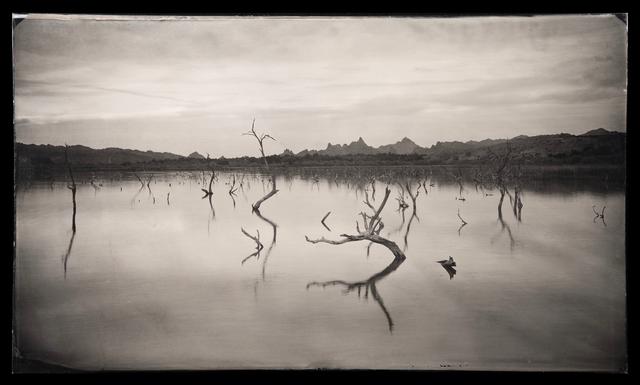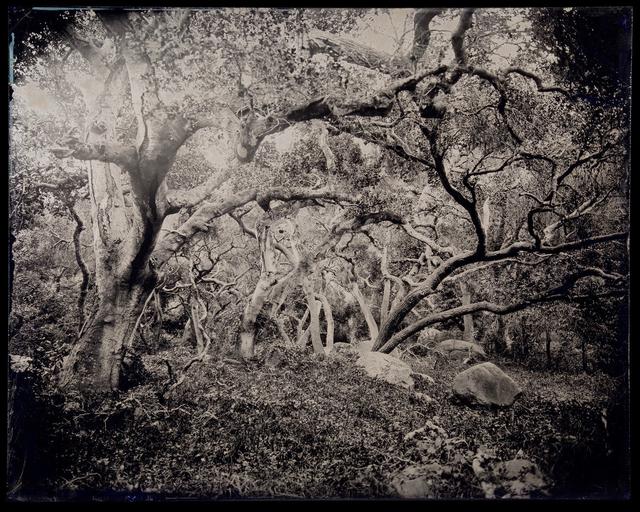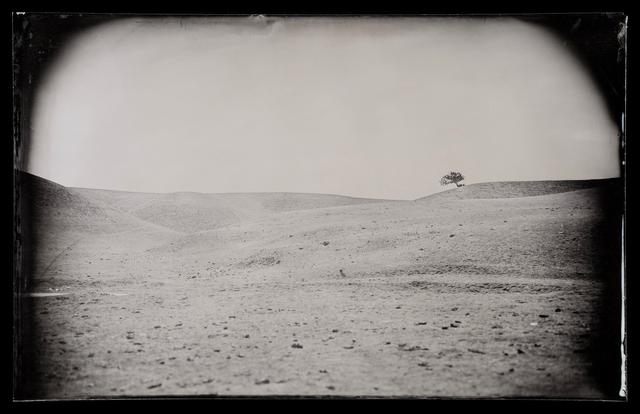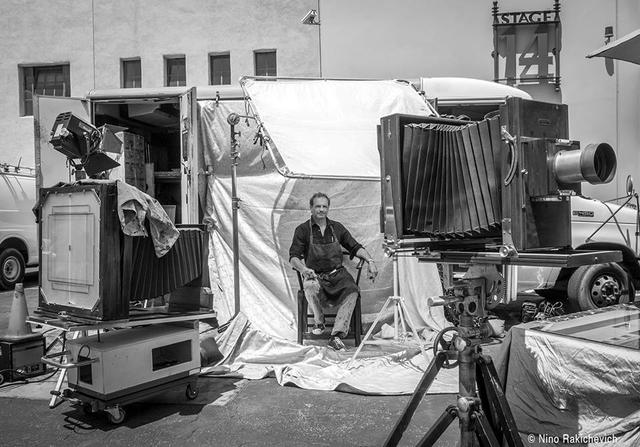Wet Plate Collodion Landscapes:
Ambrotypes, Tintypes, and Negatives in the Field
with Luther Gerlach
This workshop focuses on wet plate collodion positives (ambrotypes and tintypes) with an option to produce negatives. Inspired by the great photographers of the west, Timothy O'Sullivan, William Henry Jackson and Carlton Watkins, this workshop is all about working in the field and photographing landscapes in the stunning Montana scenery. The workshop will begin with an orientation to the history of wet plate surveys in the west, with a focus on the lenses, cameras and technologies that made this work possible. Students will be provided with an in-depth manual and instruction on the theory and practice of the wet plate collodion process. Learning by doing, students will be led step-by-step as they mix chemistry, coat plates, shoot, develop and varnish.
Participants will work directly with Gerlach’s collection of historical cameras and lenses as they create their own wet plate collodion positives and negatives. Working in the great outdoors presents the wet plate practitioner with its own set of difficulties and special needs, which Gerlach will guide the students through. The emphasis in the field will be making clean, precise work. This workshop is intended for participants with a wide range of experience levels and interests. Beginning and experienced wet plate photographers, curators and photo historians will all find this workshop enlightening and beneficial. Participants will be immersed in a learning environment designed to give you the confidence to continue working and developing skills on your own.
Workshop Price: $795.00
Save up to 25% off tuition!
An early registration by the 30th of April 2017 qualifies for a 15% discount on your workshop tuition.
**Register and attend two classes consecutively and receive one night of your B&B stay free also receive a 10% discount off the second weeks tuition.
Remember our bring a friend Discount 10% is available when you both sign up for the same workshop
Ask Lynn about the Artist in Residency Program. Call Lynn at 406-544-8960 for more info and to sign up for workshops.
BIO
Luther Gerlach is one of the foremost artists working in historical photographic processes. For the past 30 years, he has been involved with many aspects of the art form, including lecturing and demonstrating at museums, universities and private workshops; building the cameras he works with and collecting lenses, cameras and other historical photographic technologies. Gerlach has conducted workshops and master classes across the United States and Europe, including at the inaugural European Wet plate collodion symposium. As expert in historical processes he has contributed to the Getty Museum’s Encyclopedia of Photographic Processes. As an artist, “my main emphasis is working with the poetic structure of light to coax layers of meaning and beauty from my subject matter.”
Gerlach uses his extensive collection of antique cameras and lenses for his work, with a special focus on mammoth plate cameras. His primary focus for the last 15 years has been the wet plate collodion process. Gerlach has done over 200 on-site demonstrations, lectures and workshops at the J. Paul Getty Museum and was a featured speaker at the 2015 Alternative Photographic International Symposium. He has taught historical photographic processes at universities around the country, including UCLA, Art Center, Tulane, Brooks Institute of Photography and New York Film School. His work is exhibited internationally and included in major private and museum collections.
Find more of his work on www.luthergerlach.net
September 24th-29th, 2017
Workshop Update
"For this workshop, I’m filling my VW 84 Vanegon to the brim with at least five small view cameras (4x5 to 8x10), one stereo camera shooting 5x8 plates, plate holders for each camera, a dozen lenses, cases for all the glass, two darkroom tents, four silver baths, gallons of chemistry and water, drying racks, glass vices for polishing, a 12x20 camera that I built, and if there’s room, the 22x28 Griffeness wet plate camera that I built. Even with all of this equipment, proper work flow and technical understanding will simplify the whole process into something quite achievable, even for the novice photographer. All you need is desire and perseverance!"
Our Bed and Breakfast is full but we have camping available!



